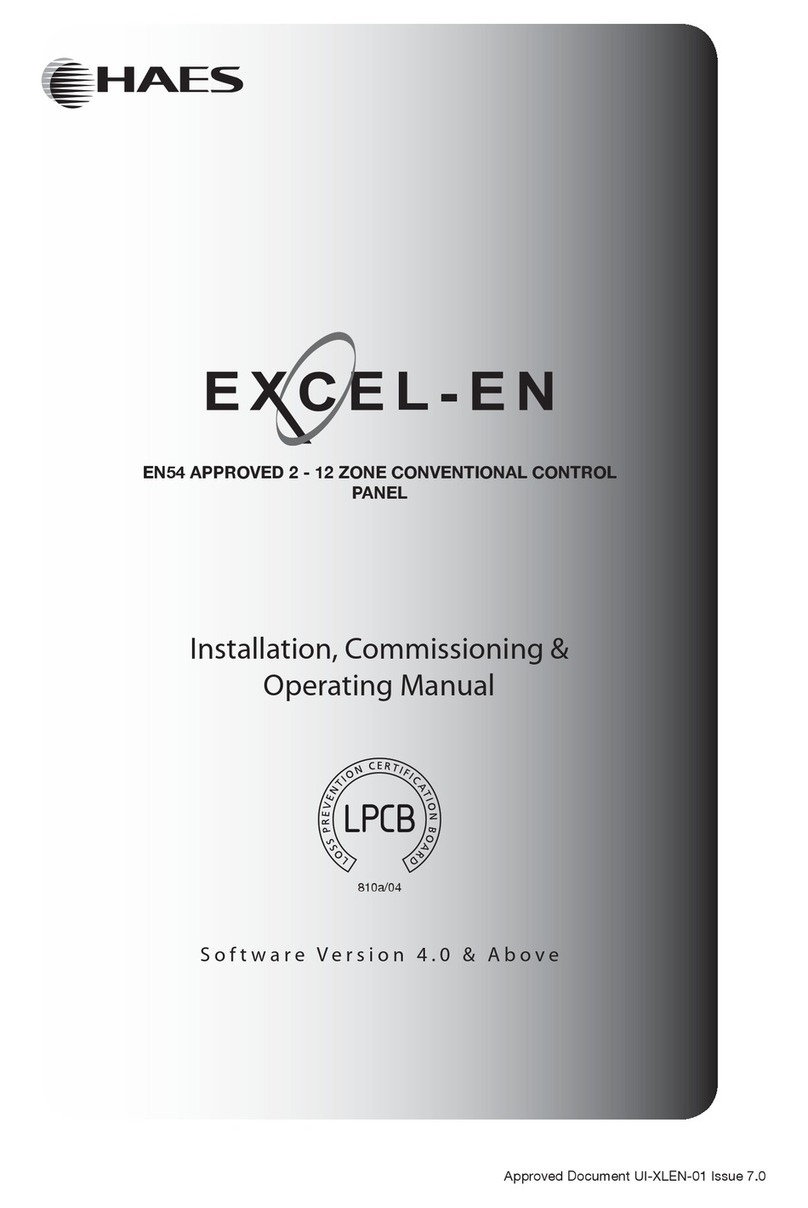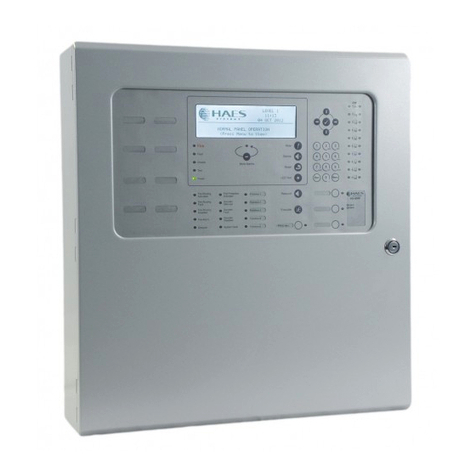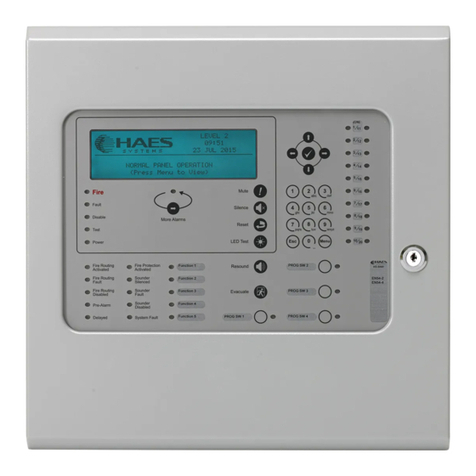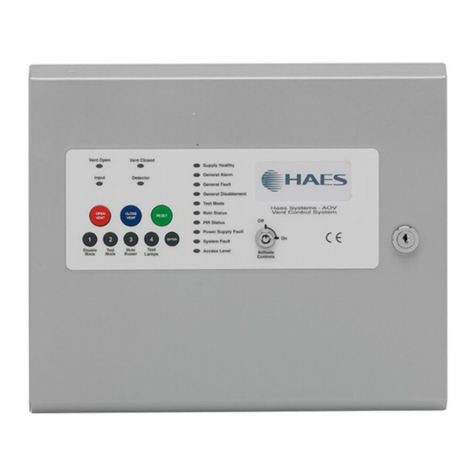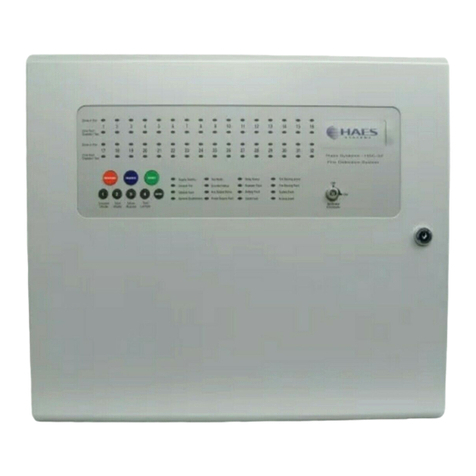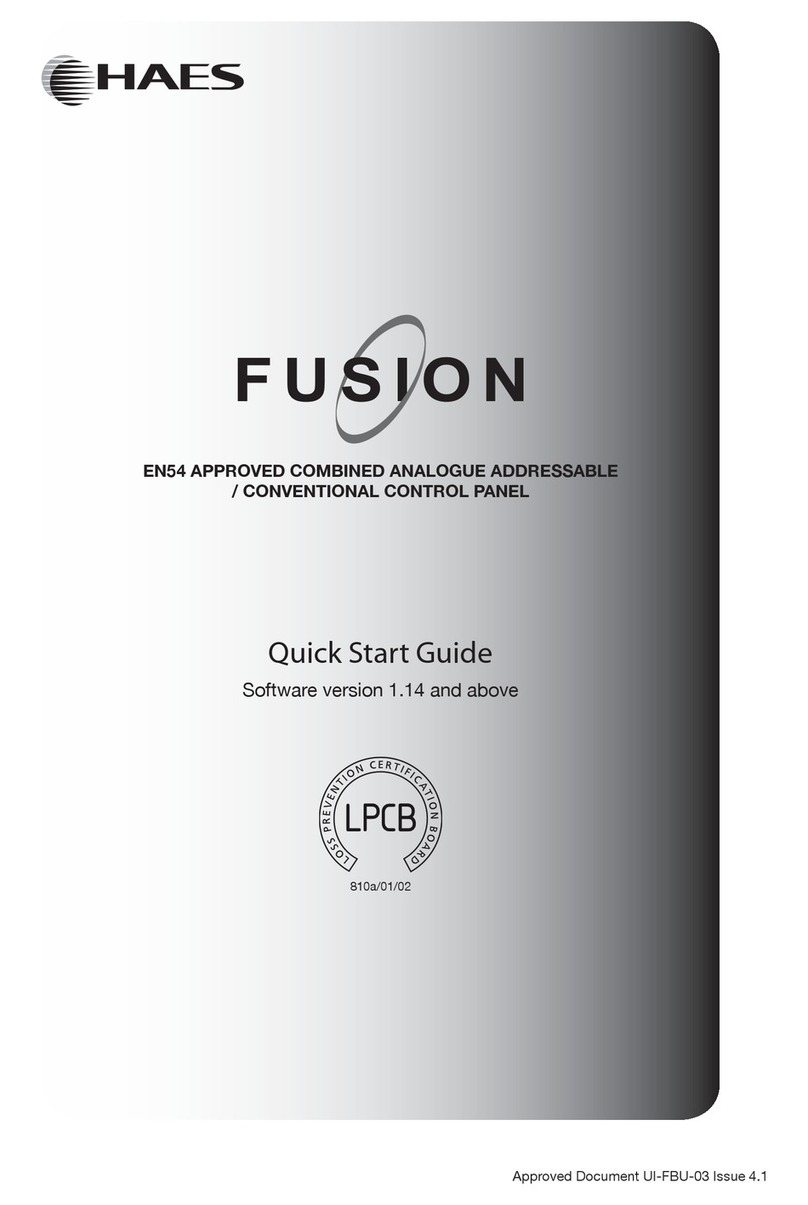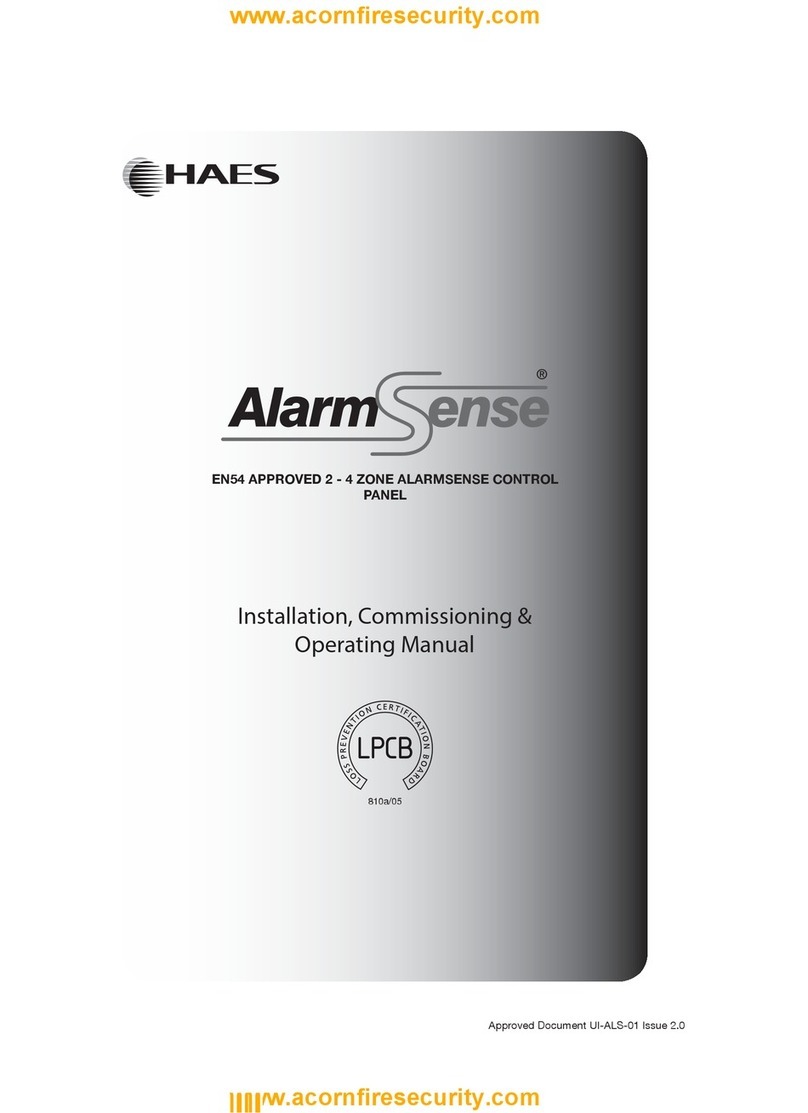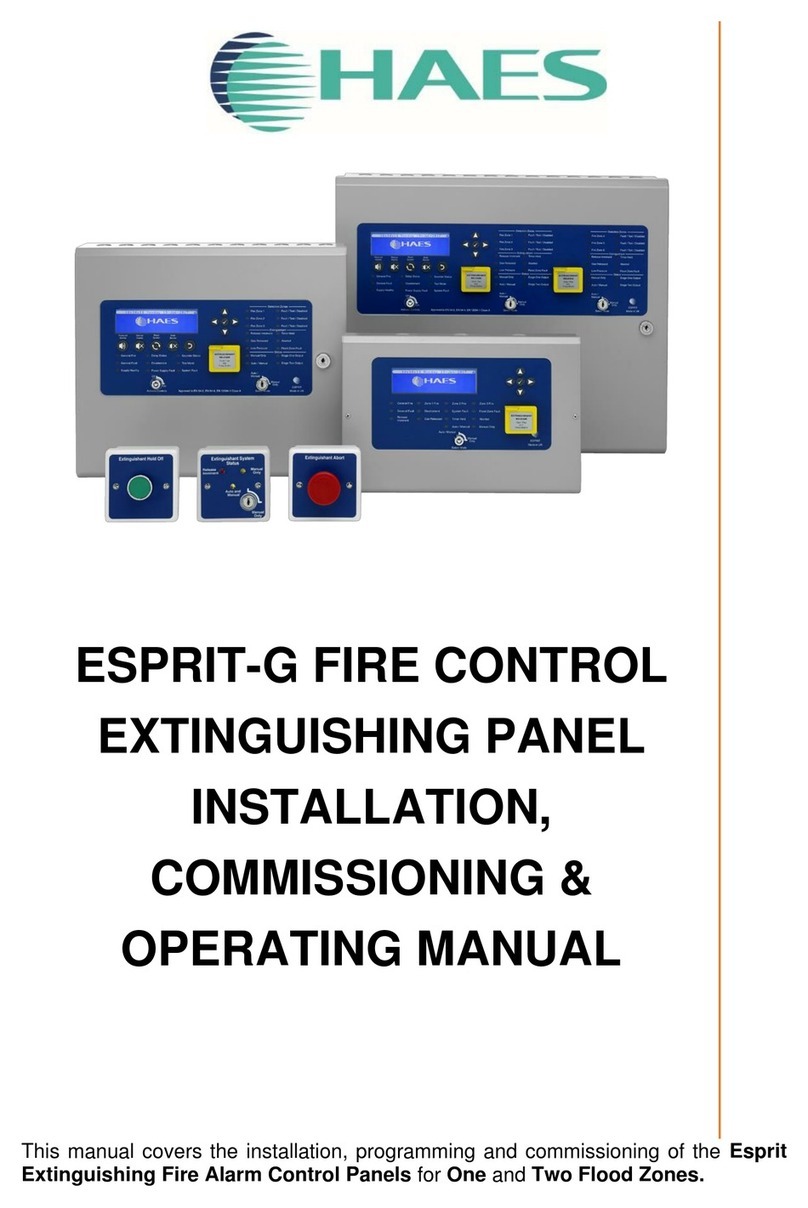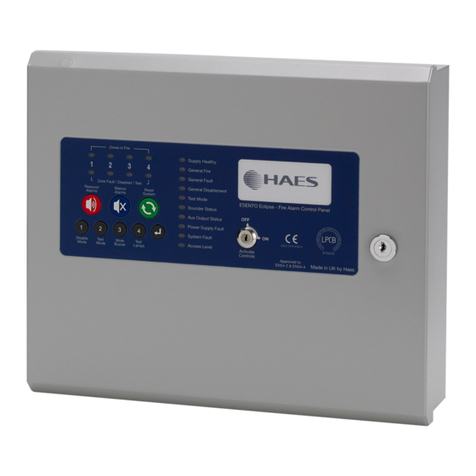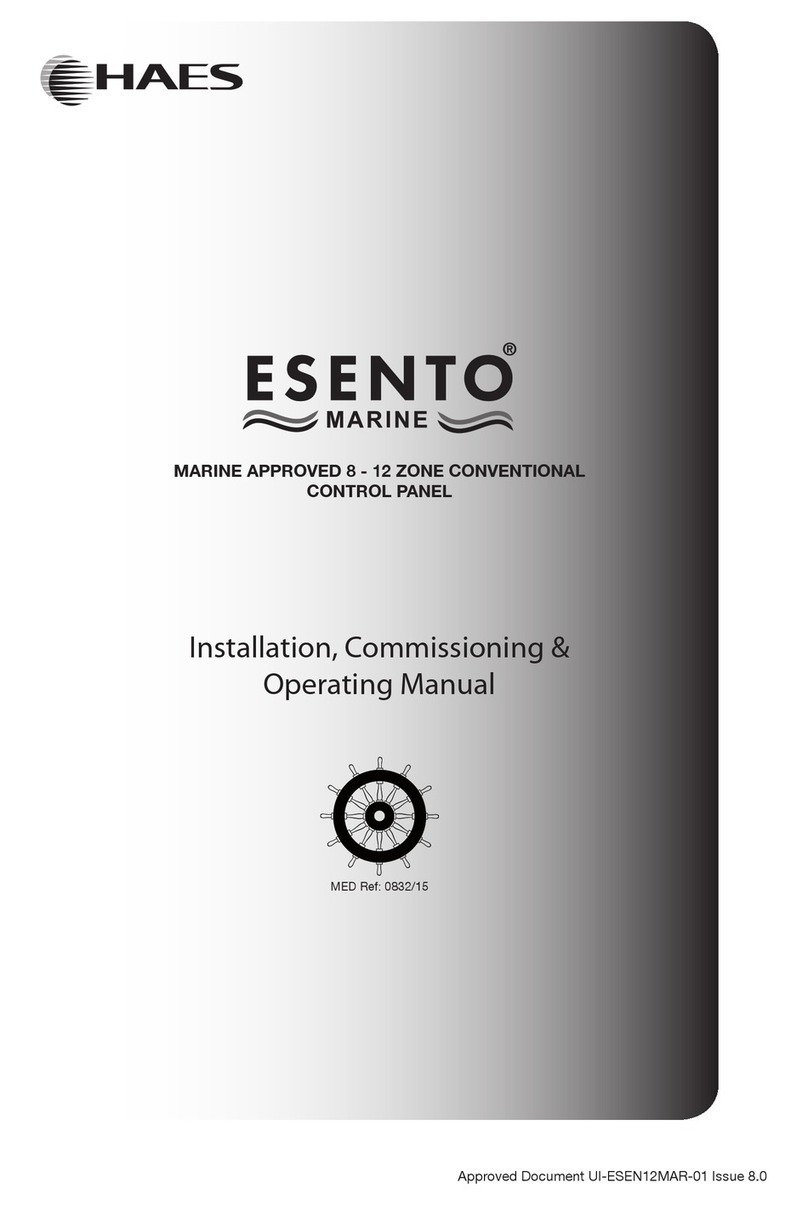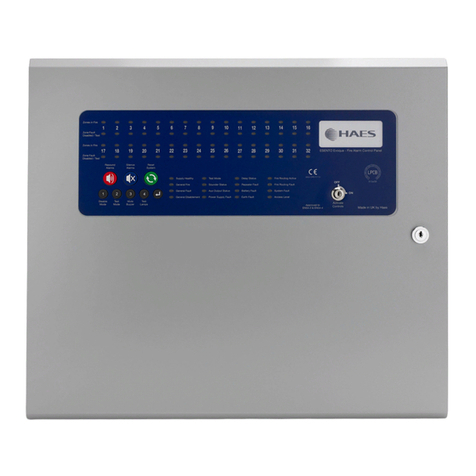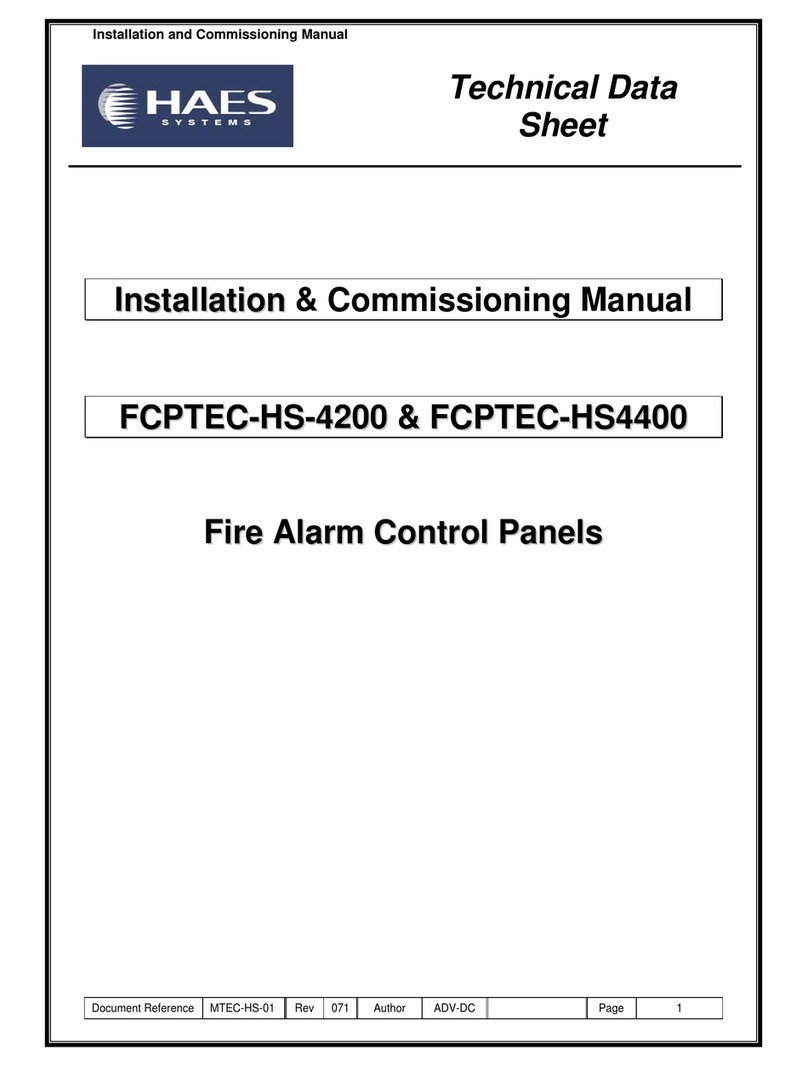
Esento Marine 2-4 Installation, Commissioning & Operating Manual Approved Document UI-ESEN4MAR-01 Issue 6.0
6
ABOUT THIS PANEL
General Specication
Enclosure Steel IP30. Epoxy powder coated Interpon Radon, silver grey
Temperature range -5 deg C to +55 deg C max RH 95%
Vibration IEC 60068-2-6 Test F
Inclination IEC 60092-501 22.5o
Number of conventional detection circuits 2 or 4
Detector compatibility Apollo: S65, Orbis. / Hochiki CDX. / Nittan EV
TECHNICAL SPECIFICATION
Electrical Specication Inputs & Outputs - TPCA01-H2/H4
Cabling Fire resistant screened cable, minimum
size 1mm2. Max cable length 1Km (20
Ohm). FireBurn, FP200 or equivalent
(max capacitance 1uF, max inductance 1
millihenry).
Suitable cable glands must be used.
Terminal capacity 0.5mm2 to 2.5mm2solid or stranded wire.
PSU @ output Power supply voltage control line. For temperature compensation control.
PSU Input + - 28vdc supply input. Diode protected for
reversal and independent short circuit.
Max current 3 amps.
Max input current 3 amps. Input voltage
22vdc to 32vdc.
28v+, 0v- power output 28vdc supply output for re alarm
accessory relays etc. Max continuous
use = 400mA.
Fused @ 500mA. Fuse = 500mA
resettable fuse.
Common re relay Fire relay contact. Clean C/O.
Max 3A @ 30vdc
Unfused
Common fault relay Maintained fault relay contact. Clean
C/O. Max 3A @ 30vdc
Unfused
Outputs; FR, FLT Switched -ve voltage outputs for relay
control.
Overload voltage protected to 52vdc.
Current limited 680R. Max load = 40mA
Inputs; CC, PUL Switched -ve inputs, connect to 0v to
trigger. Max input voltage = 28vdc. Non
latching, max resistance 100R.
Protected via 10K Ohm impedance, 3v6
zener diode.
SNDR 1 - 2 28vdc polarity reversal monitored
sounder outputs to re alarm devices.
4K7 Ohm 5% 0.25W EOL resistor.
Monitoring current limit 28mA, fused @
500mA. Typical max load 22 devices @
18mA each per circuit. Ensure 0.9A is not
exceeded.
Zone 1 - 4 Fire alarm zone circuits. Conventionally
wired detection circuit. 4K7 Ohm 5%
0.25W EOL resistor.
Maximum detector load 3.5mA per zone,
Typical qty 40-50 Apollo marine optical
detectors, Note:- Max 32 detectors with
line continuity diode bases tted
